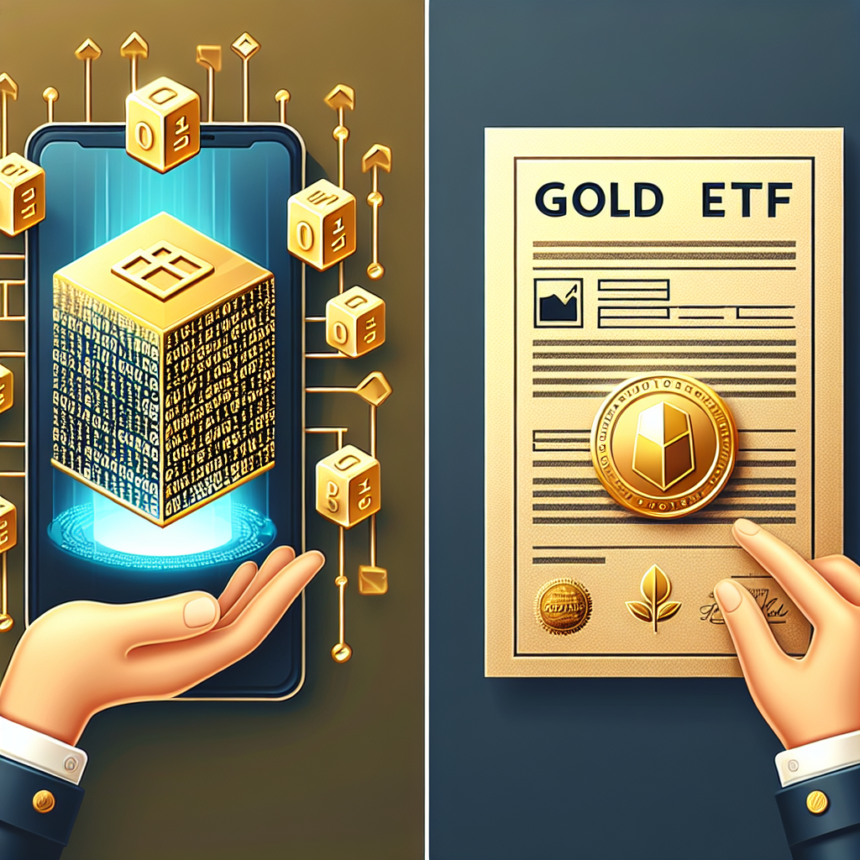Published on The Rupee Voice | www.rupeevoice.com
Gold has always held a timeless allure for Indian investors. Be it during weddings, festivals, or market uncertainty, gold has remained a symbol of security, prosperity, and trust. But in today’s digital age, physical gold is no longer the only option.
Two modern ways of owning gold without holding it physically have emerged: Digital Gold and Gold ETFs (Exchange Traded Funds). While both aim to provide exposure to the price of gold, the way they operate, their cost structures, and their convenience differ dramatically.
So, how do you choose between the two? And which one fits your financial goals better? Read on till the end to discover not just the differences but the real-life use cases that will help you make a smart, informed choice.
Understanding the Basics
What is Digital Gold?
Digital Gold is a way of buying 24K gold online in fractional quantities. You can invest as little as ₹1, and the equivalent amount of physical gold is stored in secure, insured vaults by providers like MMTC-PAMP, SafeGold, and Augmont. These platforms are integrated into apps like PhonePe, Paytm, and Google Pay.
The best part? You don’t need any financial knowledge or Demat account to get started.
What is a Gold ETF?
A Gold ETF is a mutual fund scheme listed and traded on stock exchanges. It invests in 99.5% pure gold and mirrors the domestic price of gold. To invest, you need a Demat account and a trading account. These are regulated by SEBI, offering high levels of transparency and security.
Examples of popular Gold ETFs include:
- SBI Gold ETF
- HDFC Gold ETF
- Nippon India Gold ETF
1. Ease of Access
Digital Gold: You can start with just a mobile number and an internet connection. It is beginner-friendly and requires no financial documentation.
Gold ETF: Requires a Demat and trading account. It suits more seasoned investors who are already investing in mutual funds or stocks.
Example: Ramesh, a college student, wants to start investing with ₹500. He uses Google Pay to buy Digital Gold within 2 minutes. Priya, a stock market investor, chooses to buy SBI Gold ETF via her Zerodha account.
2. Minimum Investment
Digital Gold: Minimum investment starts as low as ₹1.
Gold ETF: Usually, the price of one unit equals 1 gram of gold. So if gold is trading at ₹6,000/gram, that’s the minimum entry point.
3. Liquidity and Redemption
Digital Gold: Buy and sell 24×7. Some platforms even let you redeem your investment in the form of physical gold.
Gold ETF: Traded only during market hours. Redemption is in cash only.
Real-Life Scenario: On a Sunday night, Meera wants to book some profits. She sells her Digital Gold on PhonePe instantly. Her brother, who holds a Gold ETF, must wait for Monday market hours.
4. Storage and Safety
Both are stored securely:
- Digital Gold is backed by real gold in vaults managed by partners.
- Gold ETFs store gold in RBI-approved vaults via custodians.
5. Price Transparency & Regulation
Digital Gold: Pricing may vary slightly based on the vendor. It isn’t regulated directly by SEBI or RBI, which may concern some investors.
Gold ETF: Highly transparent and regulated by SEBI. Prices reflect real-time market values.
6. Tax Implications
Taxation is similar for both:
- Holding under 3 years: Short-Term Capital Gains as per your slab.
- Holding over 3 years: 20% Long-Term Capital Gains with indexation.
However, Sovereign Gold Bonds (SGBs) offer tax-free redemption if held till maturity, making them a strong alternative to consider.
7. Systematic Investment Option (SIP)
Digital Gold: You can set up daily, weekly, or monthly SIPs starting from ₹100.
Gold ETF: SIPs not available directly. You can invest periodically via mutual fund gold savings funds.
Example: Neha automates a monthly ₹1000 investment in Digital Gold via Paytm to buy a gold coin for her wedding next year.
8. Cost Structure
Digital Gold:
- Slight premium over market price
- Storage fee after a certain period
- Delivery charges for physical redemption
Gold ETF:
- Lower expense ratio (typically 0.5% or less)
- Brokerage fees during trading
Over time, Gold ETFs tend to be more cost-efficient for larger investors.
Summary Table
| Factor | Digital Gold | Gold ETF |
|---|---|---|
| Accessibility | Very High | Moderate (Demat required) |
| Min Investment | ₹1 | ₹6,000+ (1 gram of gold) |
| Trading Hours | 24×7 | Stock market hours |
| Redemption | Digital/Physical | Cash only |
| Regulation | Not directly regulated | Regulated by SEBI |
| Tax Benefits | LTCG after 3 years | Same as Digital Gold |
| SIP Option | Available | Indirectly via gold saving funds |
| Cost Over Time | Higher premiums | Lower expense ratio |
Which One Should You Choose?
There’s no absolute winner. Your best choice depends on your personal financial goals, comfort level with financial tools, and investment horizon.
Choose Digital Gold if:
- You want to start small
- You prefer app-based simplicity
- You plan to redeem as physical gold later
Choose Gold ETFs if:
- You already have a Demat account
- You want cost-efficiency and market discipline
- You want a regulated and transparent investment
Final Thoughts from The Rupee Voice
Gold continues to shine as a reliable asset class. But in this digital age, how you buy and hold it makes all the difference.
Digital Gold offers simplicity. Gold ETFs offer structure.
Now that you know the pros and cons of both, it’s time to ask yourself: Are you investing for convenience or long-term efficiency?
Liked this article? Share it with someone looking to invest in gold!
Read more on www.rupeevoice.com for trusted insights, tips, and real-world financial wisdom.


Leave a Reply